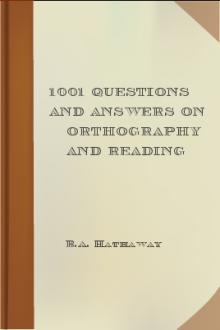Big Dummy's Guide To The Internet - Electronic Frontier Foundation (reading rainbow books .txt) 📗

- Author: Electronic Frontier Foundation
- Performer: 1428042873
Book online «Big Dummy's Guide To The Internet - Electronic Frontier Foundation (reading rainbow books .txt) 📗». Author Electronic Frontier Foundation
Hit “b” to continue
Hahahha… fooled u!
4.6 THE FIRST AMENDMENT AS LOCAL ORDINANCE
Usenet’s international reach raises interesting legal questions that
have yet to be fully resolved. Can a discussion or posting that is legal
in one country be transmitted to a country where it is against the law?
Does the posting even become illegal when it reaches the border? And
what if that country is the only path to a third country where the
message is legal as well? Several foreign colleges and other
institutions have cut off feeds of certain newsgroups where Americans
post what is, in the U.S., perfectly legal discussions of drugs or
alternative sexual practices. Even in the U.S., some universities have
discontinued certain newsgroups their administrators find offensive,
again, usually in the alt. hierarchy.
An interesting example of this sort of question happened in 1993,
when a Canadian court issued a gag order on Canadian reporters covering a
particularly controversial murder case. Americans, not bound by the gag
order, began posting accounts of the trial — which any Canadian with a
Net account could promptly read.
4.7 USENET HISTORY
In the late 1970s, Unix developers came up with a new feature: a
system to allow Unix computers to exchange data over phone lines.
In 1979, two graduate students at Duke University in North
Carolina, Tom Truscott and Jim Ellis, came up with the idea of using
this system, known as UUCP (for Unix-to-Unix CoPy), to distribute
information of interest to people in the Unix community. Along with
Steve Bellovin, a graduate student at the University of North Carolina
and Steve Daniel, they wrote conferencing software and linked together
computers at Duke and UNC.
Word quickly spread and by 1981, a graduate student at Berkeley,
Mark Horton and a nearby high school student, Matt Glickman, had
released a new version that added more features and was able to handle
larger volumes of postings — the original North Carolina program was
meant for only a few articles in a newsgroup each day.
Today, Usenet connects tens of thousands of sites around the world,
from mainframes to Amigas. With more than 3,000 newsgroups and untold
thousands of readers, it is perhaps the world’s largest computer
network.
4.8 WHEN THINGS GO WRONG
When you start up rn, you get a “warning” that “bogusnewsgroups” are present.
Within a couple of minutes, you’ll be asked whether to keep these or
delete them. Delete them. Bogus newsgroups are newsgroups that your
system administrator or somebody else has determined are no longer
needed.
While in a newsgroup in rn, you get a message: “skippingunavailable article.”
This is usually an article that somebody posted and then decided to
cancel.
You upload a text file to your Unix host system for use in aUsenet message or e-mail, and when you or your recipient reads the file,
every line ends with a ^M.
This happens because Unix handles line endings differently than MS-
DOS or Macintosh computers. Most Unix systems have programs to convert
incoming files from other computers. To use it, upload your file and
then, at your command line, type
dos2unix filename filename or
mac2unix filename filename
depending on which kind of computer you are using and where filename is
the name of the file you’ve just uploaded. A similar program can prepare
text files for downloading to your computer, for example:
unix2dos filename filename or
unix2mac filename filename
will ensure that a text file you are about to get will not come out
looking odd on your computer.
4.9 FYI
Leanne Phillips periodically posts a list of frequently asked
questions (and answers) about use of the rn killfile function in the
news.newusers.questions and news.answers newsgroups





Comments (0)